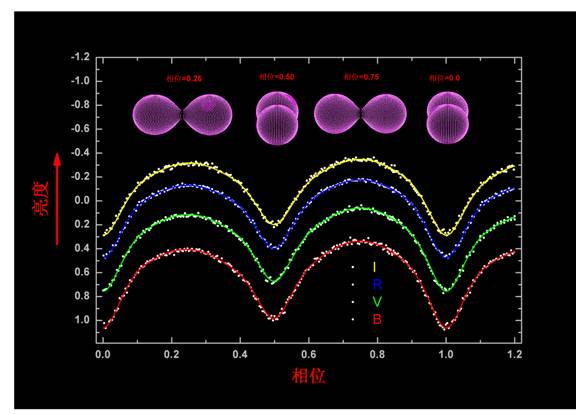Recently, a team under Professor Shengbang Qian of Yunnan Observatories discovered a binary consisting of a pair of K-type stars of almost identical mass, and dubbed the system a "twin binary". It was also found that this twin system has a less massive tertiary. The work was published in November on ApJS.
BI Vulpeculae, the binary in question, has an orbital period of 363 minutes. Qian et. al. obtained the complete light curves in August 2012 (see figure). Through analysis of this light curve, they found that both constituents have filled their Roche Lobe, and share a convective common envelope. The system is therefore a contact binary. With a mass ratio of 1.037, they are almost identical in mass. The asymmetry in the light curve is mainly due to a dark spot on one of the constituent stars. It can be inferred from the thin common envelope that the system has only just evolved into a contact binary, and the periodic variation of the orbital period implies the presence of a tertiary of at least 0.3 solar masses, with possibly other bodies in the system. These properties suggest that BI Vulpeculae was formed in a way that is different from other high mass contact binaries, having had no mass exchange prior to contact, and evolving through loss of angular momentum alone. The tertiary may have played a role in this process.
This project was funded by National Natural Science Foundation of China grants #11133007 and #11203066.
The paper may be cited as follows:
S.-B. Qian, N.-P. Liu, K. Li, J.-J. He, L.-Y. Zhu, E. G. Zhao, J.-J. Wang, L.-J. Li, and L.-Q. Jiang, BI Vulpeculae: A Siamese Twin with Two Very Similar Cool Stars in Shallow Contact, 2013, ApJS 209, 13
